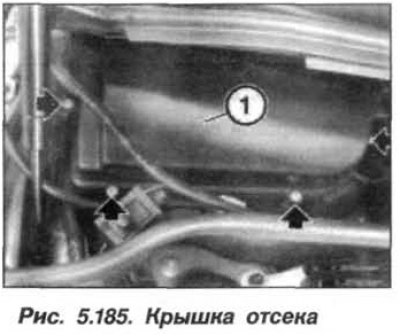Attention!
- ECU-KSUD can be without power (AB disabled) no more than one hour, otherwise the data on the results of self-learning is lost.
- When installing a new ECU-KSUD (DME) you need to know the number and code of the unit to be replaced.
The installation of a new control unit should only be carried out by a workshop, as when reinstalling the ECU-KSUD or installing a new unit in the system, it is necessary to enter new data and let the engine run in all modes of its operation.
Removing the ECU-KSUD must be carried out in the following order. If possible, warm up the engine to operating temperature. Take readings from the diagnostic loop and record them. Eliminate the identified malfunctions and erase the entries from the fault memory of the DME ECU-ECU.
If a malfunction is detected due to the fault of the ECU-ECU, then turn off the ignition and connect the DIS tester or MoDiC. Start work only after turning off the ignition and removing the battery.
Release the lock and remove the A/C filter airflow guide. Remove screws (arrow, fig. 5.185) and remove the cover (1) control electronics compartment.

Note. Seal screws (3) unscrew only when dismantling the wiring harness.
Disconnect the ECU-KSUD ALs on the DME system unit. Remove the control unit from the clips, opening them first, do not remove the clips. Remove the DME ECM. Further actions with the ECU-KSUD are determined in accordance with the instructions for the DIS tester.
Installation of the ECU-KSUD should be carried out in the reverse order, while it is necessary, when closing the cover of the control electronics compartment, to insert its holders (paws) into the holes and snap the cover on.
If the control unit has been de-energized for more than one hour or a new unit is being installed, then it is necessary: to program the ECU-KSUD; encode ECU-KSUD; read information about malfunctions from the memory of the memory of the ECU-KSUD system «DME»; eliminate malfunctions and erase information about malfunctions from the memory of the memory; warm up the engine to operating temperature; make a trial run of 10–12 km at a variable speed, using all possible driving modes. In this case, the control unit will receive all the necessary data for averaging.
